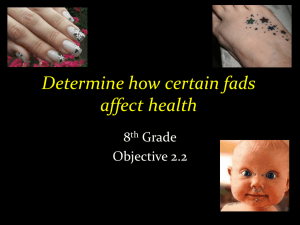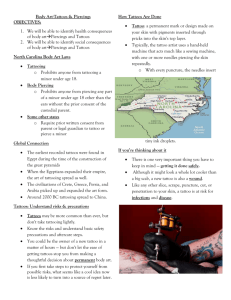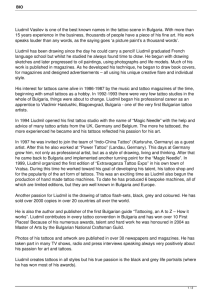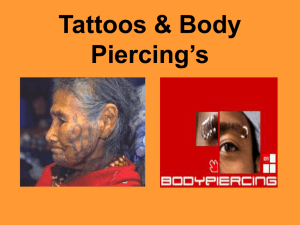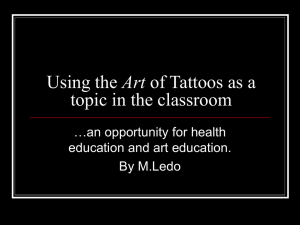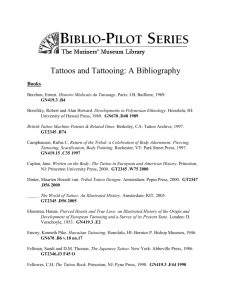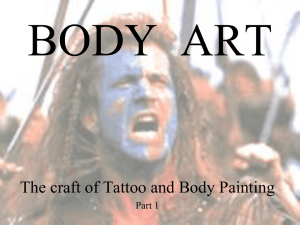TATTOOING AND BODY PIERCING
advertisement
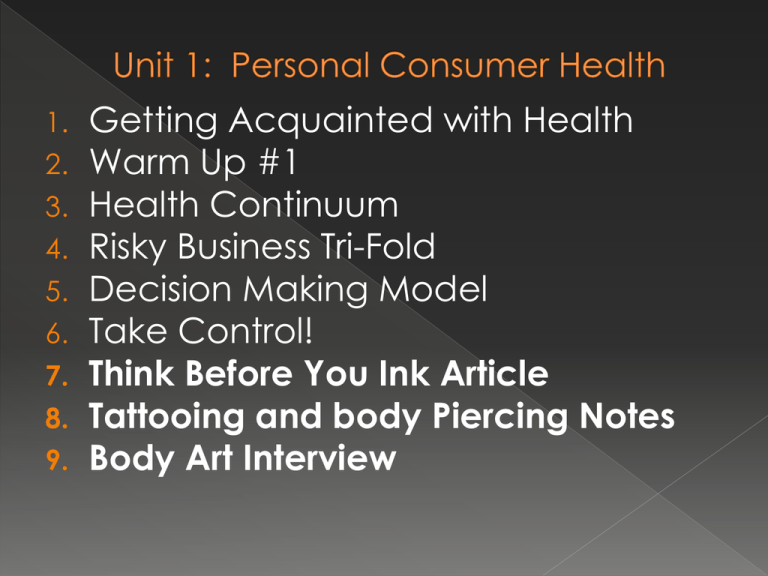
Getting Acquainted with Health 2. Warm Up #1 3. Health Continuum 4. Risky Business Tri-Fold 5. Decision Making Model 6. Take Control! 7. Think Before You Ink Article 8. Tattooing and body Piercing Notes 9. Body Art Interview 1. What is a Fad? What are some Fads of today? Tattoos: Location of tattoo That it’s permanent Risks involved Pain involved Procedure Oral/Body Piercing: Location of piercing Risks involved Pain involved What factors need to be considered when deciding if you want this form of body art? What precautions and information should an individual find out before making the decision to get a tattoo or body piercing? What is involved in getting a tattoo or having a body piercing done? Describe how each is done. What are the benefits of engaging in this activity? What are the short-term and long-term health risks? Why do people engage in these activities? What is the attraction? What are some health consequences that an individual needs to consider when he/she considers getting a tattoo? What are some health consequences that an individual needs to consider when he/she considers getting multiple body piercings? What are some social consequences that an individual needs to consider when he/she considers getting a tattoo or body piercings? (Example: future employment; opinions that may be formed about someone with tattoos or body piercings) How important are these social consequences to you? Will that change as you get older? Tattoos: FDA has not approved tattoo procedures Tattoo removal Age requirement How to care for it Oral/Body Piercing: The training the piercer has How piercing instruments are sterilized Whom to contact if problems arise How to care for it Infections or blood-borne diseases such as Hepatitis B or C, Tetanus, and HIV/AIDS from equipment and needles that were not sterile Allergic reactions to tattoo pigments MRI complications Unwanted scar tissue may form when getting or removing a tattoo. Keloids - Red, raised scarring caused by excessive tissue repair Granulomas – These small knots or bumps may form around material that the body perceives as foreign, such as particles of tattoo pigment Dissatisfaction – Tattoo removal is difficult and painful People with certain kinds of tattoos are not eligible for enlistment in the military Blood-borne diseases such as Hepatitis, Tetanus, and HIV/AIDS Allergic reactions to the metal in the jewelry Skin infections Scars and Keloids Nerve damage – loss of feeling in area surrounding piercing Interfere with speech, chewing or swallowing Cause excessive drooling Result in infection, pain and swelling Cause chipped or cracked teeth Result in injuries to the gums Cause damage to fillings Increase saliva flow Result in hypersensitivity to metals Cause scar tissue and nerve damage Tattoos: State or local license Autoclave Fresh equipment Gloves Clean appropriately Oral/Body Piercing: Ask questions Autoclave Fresh equipment Gloves Clean appropriately The decision to get a tattoo is a permanent decision Their complete removal is difficult Several removal techniques do exist, but regardless of the method used, scarring and skin color variations are likely to remain
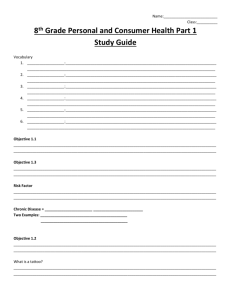
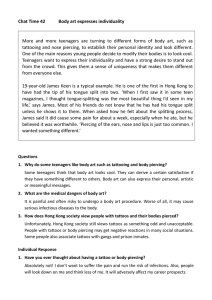
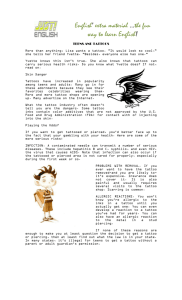
![Body_Art[1]](http://s2.studylib.net/store/data/005398178_1-62f43fb78308c3c2a71796fe5cf61395-300x300.png)
